Introduction
Each year the Higher Education Statistics Agency (HESA) publish a statistical bulletin on higher education student statistics in the UK.
On 17 January 2019 they released the bulletin that covers the 2017/18 academic year. Whilst it is almost two years old, the data in this release is based on actual student enrolments (not applications as in UCAS data) and is the most up-to-date and reliable data on the size and characteristics of the higher education student body in the UK. It is used by policymakers in England and Wales, as well as regulators and those researching higher education.
This blog post walks through some of the data that has provoked comment in the past. The whole release, and all the data can be found at this link.
Student enrolments at Welsh providers 2017/18
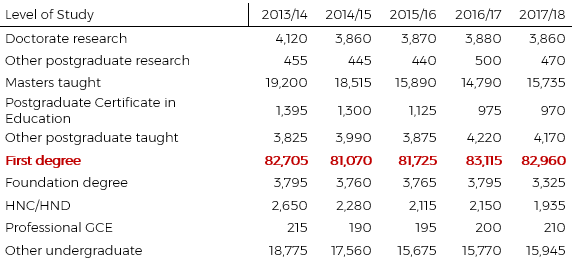 Table 01 – full and part-time HE enrolments by level of study: Welsh providers
Table 01 – full and part-time HE enrolments by level of study: Welsh providers
The table above shows that the number enrolled on a first-degree level qualification (BA, BSc etc) has remained relatively stable and returned to 2013/14 levels in 2017/18.
The Welsh higher education sector receives most of its income [PDF: 434KB] from tuition fees with first-degree students making up 64% of all enrolments in 2017/18, and 78% of full-time enrolments.
The full data beyond this table also shows that the number of undergraduates enrolling on their first year in 2017/18 has held relatively steady, demonstrating consistent demand despite the current demographic-dip. Each cohort of students will have an impact on a university’s finances for three years as they complete their course and move through each year of study. This means that a sudden drop in first-year enrolments in 2017/18 would continue to impact university finances until July 2020.
Characteristics of those enrolled at Welsh providers in 2017/18
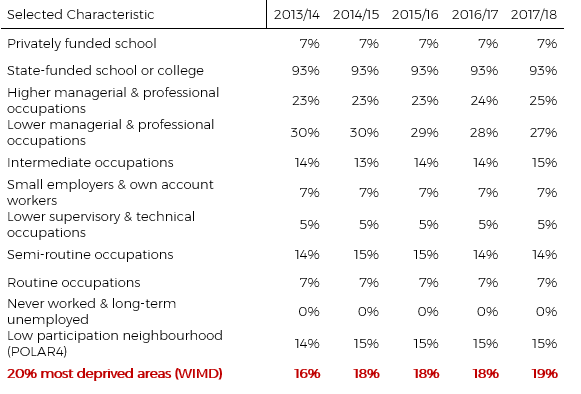 Figure 02 – selected characteristics of all UK domiciled students: Welsh providers
Figure 02 – selected characteristics of all UK domiciled students: Welsh providers
It is important to note that this table shows students enrolled at Welsh providers. It therefore includes English, Scottish and Northern Irish students as well.
The table shows that a gradually increasing proportion of student enrolments are from the most deprived areas in Wales (as measured by the Welsh Index of Multiple Deprivation – WIMD) and from neighbourhoods that normally have a low rate of higher education participation (POLAR4).
Welsh universities nearly always include recruitment targets in relation to students from WIMD and low-participation neighbourhoods in their widening access plans. The gradual overall increase (from 5,700 to 6,980 enrolments) is likely therefore to be welcomed.
Where students at Welsh providers came from in 2017/18
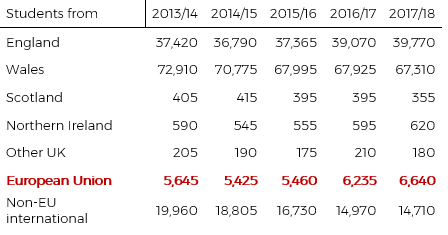 Table 03 – HE enrolments at Welsh providers by domicile
Table 03 – HE enrolments at Welsh providers by domicile
This table shows where the students enrolled at Welsh providers are from. Students from England have been gradually increasing whilst Welsh student numbers have been dropping. This could be explained by a number of factors including increased cross-border flow (more Welsh students enrolled at an English university in 2017/18 than in 2013/14) and the reduced number of 18 year olds in the UK (the so-called demographic dip).
The table also shows that enrolments from EU states rose in 2017/18 whilst further data shows a higher number of EU first year students in 2017/18 than in 2016/17.
International student enrolments (Non-EU) have fallen for the fifth consecutive year. Additional data available on the HESA website shows that Welsh providers have a reliance on Chinese students for international enrolments – they make up 41% of all international enrolments in Wales, compared to a third (33%) in England.
The cross-border flow of students in 2017/18
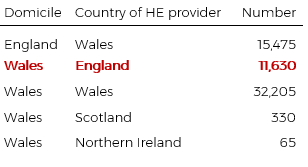 Table 04 – Cross border flow of first year students in 2017/18
Table 04 – Cross border flow of first year students in 2017/18
This table shows the cross-border flow of first year English students into Wales, and the flow of Welsh students to other UK nations in 2017/18.
Some 2% of the first year student body domiciled in England attended a Welsh provider (15,475 students), whilst 26% of the first year Welsh domiciled student body moved across the border to study at an English provider. There is little cross-border flow from Wales into Scotland and Northern Ireland.
Welsh domiciled students studying at providers in England were able (and still can as a matter of Welsh Government policy) to access the same financial support package [PDF: 642KB) as those studying in Wales in 2017/18.
Student Loan Company (SLC) statistics show that 22,200 Welsh domiciled students had their tuition fee loan paid on their behalf to English providers in 2017/18. The SLC does not release data on the amount of Welsh Government revenue funded Tuition Fee Grant (TFG) that was paid to English providers on behalf of Welsh students. However Professor Sir Ian Diamond estimated that £93.9 million was paid on behalf of Welsh students to non-Welsh UK providers in 2014/15.
It is possible to make a general estimate of this figure for 2017/18.
If all of the 22,200 Welsh domiciled students studying in England who were awarded a tuition fee loan in 2017/18, also took out the average amount of TFG awarded in 2017/18 of £4,600 (which is likely as the TFG is non-repayable and therefore ‘free’ to students), then, on this basis it can be estimated that approximately £102m of TFG may have been paid on behalf of Welsh students to English providers in 2017/18.
This figure is in contrast to the £249 million (provisional) of tuition fee loans paid by the SLC to Welsh providers on behalf of English domiciled students wishing to study in Wales (English students do not have access to an equivalent tuition free grant) in 2017/18.
The Tuition Fee Grant is currently being phased out as part of the Diamond Reforms meaning new students from 2018/19 instead can access a tuition fee loan instead of the Tuition Fee Grant.
Qualifications achieved in 2017/18
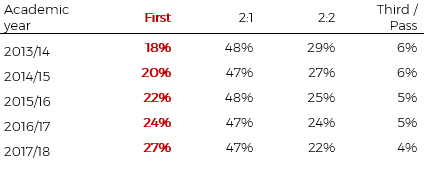 Figure 05 – Percentage of first degree qualifiers obtaining each classification: Welsh providers
Figure 05 – Percentage of first degree qualifiers obtaining each classification: Welsh providers
This table shows that the percentage of students studying a first-degree who were awarded a First by a Welsh provider has increased from 18% in 2013/14 to over a quarter in 2017/18.
Additional information
There is more up-to-date data on student enrolments available to Welsh Government and HEFCW for 2018/19 students, but this data can includes estimates and is not publicly available.
UCAS will release its provider level application data on 30 January 2019 for the 2018/19 academic year. Whilst this cannot show actual enrolments, it will give an indication of the demand to study at each Welsh university by full-time undergraduates (the main source of university income in Wales).
Article by Phil Boshier, Senedd Research National Assembly for Wales.






